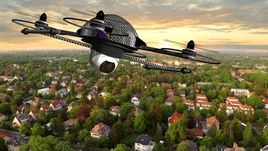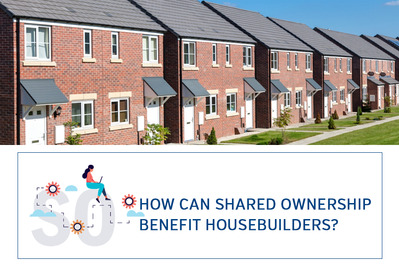
Before the advent of drones developers and agents were forced to use cherry-pickers, helicopters and light aircraft to take aerial photographs. The advantages to buyers of aerial photography are substantial. This type of image can be highly emotive and can allow the viewer to rapidly gain a real sense of perspective. Especially with larger properties, aerial video footage and images can emphasise a property’s best features.
However, cherry-pickers can be difficult and time consuming to get in place; and helicopter / light aircraft footage has to be taken from some distance for safety reasons - this can greatly affect image quality and there is a reduced sense of perspective.
 On the other hand, drones allow for a much more intimate experience, simply because they are able to safely fly very near buildings. They also allow the photographer/pilot complete control over the way in which footage is captured. A drone pilot recently flew onto, next to, inside and even under a fast moving freight train! So when marketing properties, it is possible for footage to include a tour of the main rooms, a 360O trip around the house from above and a bird’s eye view of the neighbourhood.
On the other hand, drones allow for a much more intimate experience, simply because they are able to safely fly very near buildings. They also allow the photographer/pilot complete control over the way in which footage is captured. A drone pilot recently flew onto, next to, inside and even under a fast moving freight train! So when marketing properties, it is possible for footage to include a tour of the main rooms, a 360O trip around the house from above and a bird’s eye view of the neighbourhood.
By combining drone footage taken at different times it is possible to show how the property changes throughout the day, from dawn to dusk. Drones have been used to show a how a development evolves from a plot of land through to completed homes.
In order to assure public safety and privacy there are a number of laws must be adhered to and regulations that must be followed.
 In the UK, drone operators flying for commercial purposes must have permission from the Civil Aviation Authority (CAA). Flying without CAA approval can result in prosecution and a £5,000 fine! Such flights are also highly unlikely to be insured and any damage caused would have to be paid for by the pilot.
In the UK, drone operators flying for commercial purposes must have permission from the Civil Aviation Authority (CAA). Flying without CAA approval can result in prosecution and a £5,000 fine! Such flights are also highly unlikely to be insured and any damage caused would have to be paid for by the pilot.
When booking a drone company, developers should ensure that the pilot has their commercial operations pilot’s licence (PfCO) and sufficient professional indemnity insurance to cover crash damage. Whilst collisions are very rare, larger drones do have the capacity to damage roof tiles and windows.
In the future we may see live streaming of drone footage with buyers giving the pilot instructions ‘on the fly’. Equally, as 3D technology and immersive content matures, so buyers may be able to be step into the footage and experience the flight as if they were the drone!
 An example of aerial photography used to market a large 18 bedroom detached house in Bakewell, Derbyshire An example of aerial photography used to market a large 18 bedroom detached house in Bakewell, Derbyshire
|
 Coopers Hill retirement development Coopers Hill retirement development
This large site was developed by Audley Retirement and is based in Englefield Green, Surrey |
 Tolverth Terrance Drone Video Marketing Tolverth Terrance Drone Video Marketing
This large Penzance based site's marketing campaign made active use of drone video footage |
 Tolgus - A land plot for sale in Cornwall - Drone Video Marketing Tolgus - A land plot for sale in Cornwall - Drone Video Marketing
This farm with planning permission was promoted using drone video footage |
 The Ordnance Yard Priddy's Hard Bournmouth The Ordnance Yard Priddy's Hard Bournmouth
This coastal site's marketing campaign made active use of drone video footage and 360 virtual reality content |
LSL Land & New Homes are experts in the field of New Build property marketing and can help to arrange drone coverage and 360 virtual reality scanning.



